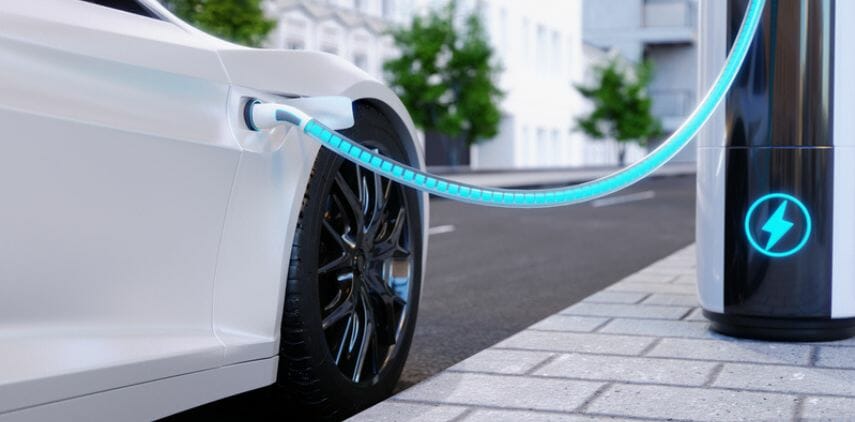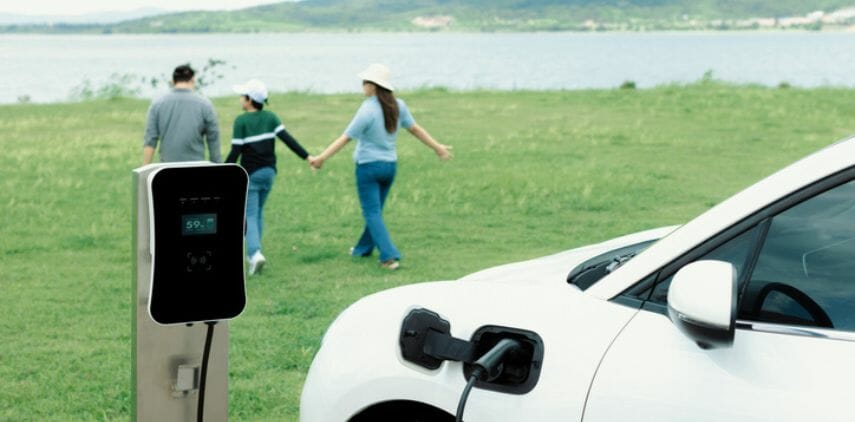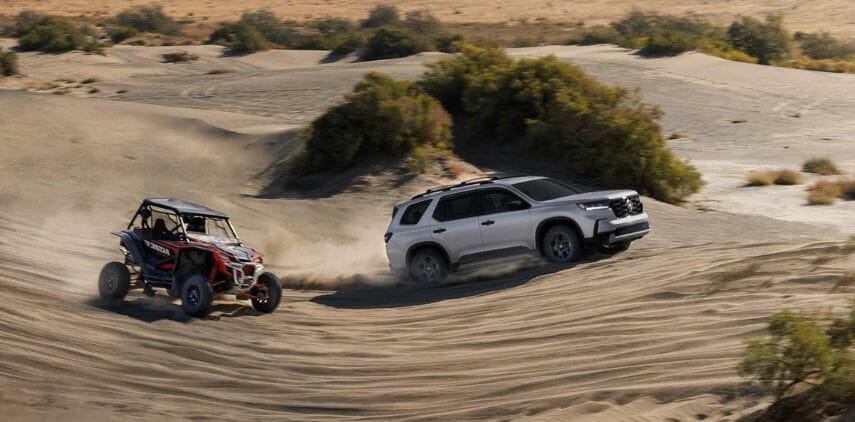Overview
When conquering the great outdoors, nothing quite compares to the power and versatility of a 4×4 SUV. But with so many different models and features, it can be overwhelming to know where to start.
That’s why we’ve compiled this comprehensive guide covering everything you need about 4×4 SUVs.
We’ve got you covered, from the different types of four-wheel drive systems to the most reliable models. So, whether you’re an experienced off-roader or just starting, get ready to dive into the world of 4×4 SUVs and discover why they’re the ultimate vehicle for adventure!
Table of Contents
What Does 4×4 Mean on an SUV?
4×4 is a term used to describe a four-wheel-drive (4WD) system on an SUV. This system delivers power to all four wheels from the engine via a transfer case, which distributes power to the front and rear axles through a series of gears and differentials.
This allows the vehicle to simultaneously provide traction to all four wheels, particularly useful in off-road and other challenging driving conditions.
Is 4×4 the Same as 4WD?
Yes, 4×4 and 4WD (four-wheel drive) are essentially the same. The term “4×4” stands for a four-wheel-drive system where all four vehicle wheels simultaneously receive power from the engine.
The “4” refers to the number of wheels, and the “x4” indicates the number of wheels is driven by the engine. The term “4×4” is often used interchangeably with “four-wheel drive” or “4WD”, which essentially means the same thing.
Is 4×4 Better Than AWD in the Snow?

Generally, 4×4 is considered better than AWD (All-Wheel Drive) in extreme snow conditions. The 4×4 systems are designed to provide maximum traction and control in off-road conditions, including deep snow. This is opposite to AWD, which might get overwhelmed without winter chains or snow tires.
Additionally, the 4×4 systems typically have a low-range mode that can provide additional torque to the wheels, which can help the vehicle maintain traction in challenging conditions.
However, the specific performance of a 4×4 or AWD system in the snow depends on several factors, including the type of vehicle, the condition of the tires, and the operator’s driving habits.
Is a 4×4 SUV Worth It?
The short answer is yes. There are various reasons why a 4×4 SUV can be worth it. Some of the primary reasons include the following:
Off-Road Capabilities
A 4×4 SUV is designed to handle challenging terrains such as rocky, muddy, or hilly roads, which a standard SUV or a sedan might not be able to take. This makes it an ideal choice for those who want to venture off the beaten path and explore the outdoors.
Improved Traction
4×4 SUVs have four-wheel drive, which can provide better traction in slippery and snowy conditions, making it easier to navigate through challenging weather conditions. This feature is especially beneficial for those who live in areas with harsh winter weather.
Increased Resale Value
4×4 SUVs generally retain their value better than regular SUVs, meaning they can offer a better resale value. They are designed to last longer and withstand tougher driving conditions.
Versatility
4×4 SUVs can be an excellent choice for families or individuals who need a vehicle that can handle various driving conditions. They can be used for everyday city driving, long highway trips, or even outdoor adventures, making them a versatile choice for those who want a vehicle that can do it all.
What Is the Most Reliable Used 4×4 SUV?

The Ford Expedition is our top pick for the most reliable used 4×4 SUV. This SUV is known for being durable, long-lasting, and easy to maintain.
The 2016 Expedition has a 3.5-liter EcoBoost V6 engine that produces 365 horsepower and 420 lb.-ft of torque. It’s paired with a six-speed automatic transmission and can tow up to 9,200 pounds.
The Expedition can seat up to eight passengers and offers plenty of space for cargo. It has 108.3 cubic feet of cargo space with the rear seats folded down. The second-row seats can slide and recline, while the third-row seats can fold flat.
Additionally, the Expedition comes with standard safety features such as a rearview camera, rear parking sensors, and Ford’s MyKey system, which allows you to set speed and audio limits for young drivers. It also has blind-spot monitoring, rear cross-traffic alert, and a forward collision warning system.
The 4×4 SUV Expedition also comes with available four-wheel drive, which makes it suitable for off-road adventures. It also has a terrain management system that allows you to select different driving modes for various road conditions, such as sand, mud, and snow.
What Is the Difference Between an SUV and a 4×4?
The terms SUV and 4×4 are often used interchangeably, but they are not the same thing. Here are the main differences between an SUV and a 4×4:
1. Drivetrain
4×4 vehicles are equipped with a four-wheel-drive system, meaning all four wheels can receive power from the engine.
On the other hand, SUVs can have either two-wheel drive or four-wheel drive, depending on the model. SUVs with four-wheel drive are also designed for off-road driving, but they may not have the same level of capability as a 4×4.
2. Body-On-Frame vs. Unibody Construction
Most 4×4 vehicles have a body-on-frame construction, meaning the body is mounted on a separate frame. This type of construction is more rugged and durable, making it better suited for off-road use.
On the contrary, most SUVs have unibody construction, meaning the body and frame are integrated into a single unit. This type of construction is lighter and more fuel-efficient, but it may not be as durable as a body-on-frame design.
3. Purpose
4×4 vehicles are designed primarily for off-road use, while SUVs are designed for a combination of on-road and off-road use. 4×4 vehicles are often used for activities such as rock crawling, mudding, and trail riding, while SUVs are more commonly used for family transportation and daily commuting.
Is 4×4 Better than AWD?
Whether 4×4 or AWD is better depends on the specific needs and preferences of the driver. Here are some factors to consider when comparing 4×4 and AWD:
Traction
Both 4×4 and AWD systems provide better traction than two-wheel-drive systems. However, 4×4 systems are generally better suited for off-road driving, while AWD systems are better suited for on-road driving in slippery conditions such as rain, snow, and ice.
Performance
4×4 systems are more robust and durable than AWD systems, making them better suited for heavy-duty off-road use. However, AWD systems can provide better handling and performance on paved roads.
Fuel Efficiency
AWD systems tend to be lighter and more fuel-efficient than 4×4 systems. This is because AWD systems only engage the wheels that need power, while 4×4 systems engage all four wheels all the time.
What’s the Difference Between AWD and 4×4?
Although the two might sound similar in functionality, they are entirely different. Here are some of the primary differences;
Power Distribution
AWD systems continuously distribute power to all four wheels, while 4×4 systems require the driver to manually engage the four-wheel drive. AWD systems are designed to provide better traction and control in various driving conditions, including slippery roads and off-road terrain, while 4×4 systems are primarily designed for off-road use.
Differential Type
All-wheel drive systems typically use a center differential to distribute power between the front and rear wheels.
In contrast, 4×4 systems use locking differentials to ensure all four wheels receive equal power. Locking differentials provide better traction in extreme off-road conditions but can make the vehicle more difficult to steer on paved roads.
Complexity
AWD systems are generally simpler and less expensive than 4×4 systems, as they do not require additional hardware such as a transfer case and locking differentials. This makes AWD systems easier to maintain and repair and may offer better fuel economy than 4×4 systems.
Applications
AWD systems are typically used in passenger cars and crossover SUVs, providing better traction and stability on paved roads.
On the other hand, 4×4 systems are used primarily in off-road vehicles and trucks, providing the necessary traction and control to navigate challenging terrain.
Is AWD as Good as 4×4 in the Snow?
AWD can be as good as 4×4 in the snow but has some limitations. AWD systems can provide excellent traction and stability on snowy or icy roads, especially when combined with good winter tires.
However, 4×4 systems are generally better suited for extreme off-road conditions, including deep snow. 4×4 systems typically have a low-range mode that can provide additional torque to the wheels, which can help the vehicle maintain traction in challenging conditions.
4×4 systems can also provide better ground clearance, which can help the vehicle navigate deep snow or other obstacles.

Conclusion
4×4 SUVs are a popular choice for drivers who need a vehicle that can handle various driving conditions— from city streets to off-road trails. With their powerful engines, advanced drivetrain systems, and spacious interiors, 4×4 SUVs offer a winning combination of versatility, performance, and comfort.
Whether navigating through deep snow, hauling heavy loads, or cruising down the highway, a 4×4 SUV will surely provide the power, stability, and style you need to make every journey memorable.






